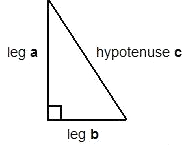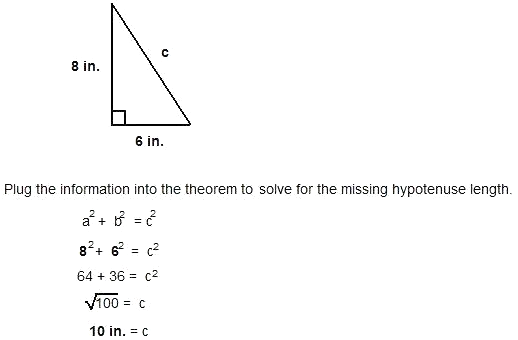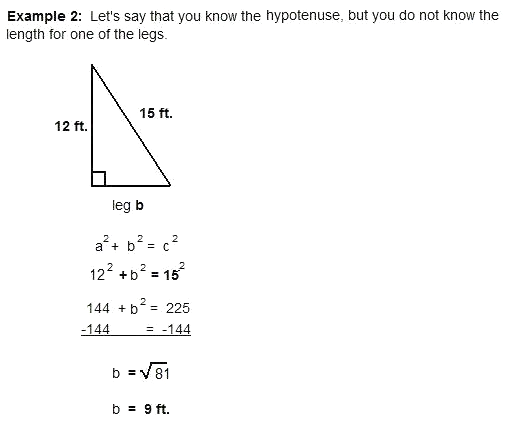Some Helpful Tools
The Pythagorean Theorem
This section will cover the fundamentals and rules of the Pythagorean theorem.
A theorem is a proven mathematical statement based on past accepted mathematical statements.
It might be helpful to draw a figure of the right triangle and label its parts to help
find the length of the missing part.
To find the hypotenuse, add the two legs as shown in Example 1.
To find a missing leg, subtract the given leg from the hypotenuse as shown in Example 2.
The Pythagorean theorem tells us that in a right angle, the square of the hypotenuse equals the sum of the squares of the legs.
This theorem is based on a right angle as shown in our diagram.
The side directly across from the right angle is called the hypotenuse.
The two shorter sides are called the legs.
The Pythagorean theorem is written as:
Finding the Hypotenuse
Let's look at some examples.
Example 1: Suppose you want to find the hypotenuse of a triangle with legs 6 inches and 8 inches.
The Pythagorean theorem was developed by a Greek mathematician named Pythagoras back in 500 B.C.
Math: Pythagorean Theorem - Tutorial


